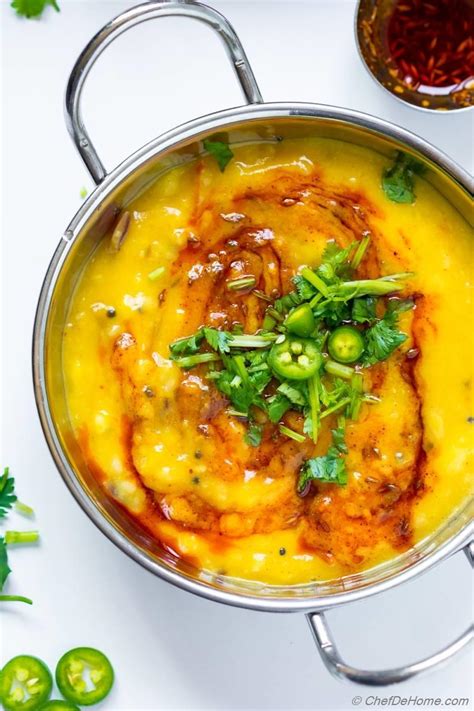A Comprehensive Guide to Making Delicious Daal
Daal, a staple in many South Asian cuisines, is a hearty and nutritious lentil-based dish. Its versatility allows for countless variations, each boasting unique flavors and textures. This guide will walk you through the process of making delicious daal, covering different types, cooking methods, and flavor enhancements. Let's dive in!
Choosing Your Daal: A Variety of Options
The foundation of any great daal is the type of lentil used. Several varieties offer distinct characteristics:
-
Masoor Daal (Red Lentils): These cook quickly and result in a smooth, easily digestible daal, perfect for weeknight meals.
-
Toor Daal (Pigeon Peas): These yield a slightly thicker, richer daal, often used in South Indian cuisine.
-
Moong Daal (Yellow Lentils): Known for their mild flavor, these lentils are versatile and often used in both sweet and savory dishes.
-
Chana Daal (Split Chickpeas): These require a longer cooking time but offer a hearty, earthy flavor.
Essential Ingredients for a Flavorful Daal
Beyond the lentils themselves, a few key ingredients elevate your daal from good to extraordinary:
-
Ghee or Oil: For sautéing spices and adding richness.
-
Ginger and Garlic: These aromatics are foundational to many daal recipes, providing a warm, savory base.
-
Onions: Adding onions provides a sweet and savory depth of flavor.
-
Spices: Turmeric, cumin, coriander, chili powder – these spices are crucial for achieving the complex flavor profile of daal. Feel free to experiment with others like garam masala, cardamom, or fennel seeds.
Step-by-Step Guide to Cooking Daal
The following steps provide a general guideline for cooking most types of daal. Adjust cooking times according to the lentil you choose:
1. Sautéing the Aromatics
Heat ghee or oil in a pot. Add finely chopped onions, ginger, and garlic. Sauté until the onions soften and become translucent.
2. Adding Spices
Add your chosen spices (turmeric, cumin, coriander, chili powder). Sauté for a minute until fragrant. This step unlocks the full potential of the spices.
3. Incorporating the Lentils
Add your rinsed daal to the pot. Stir well to coat the lentils in the spiced oil.
4. Simmering the Daal
Add water (about 2-3 times the volume of the lentils), bring to a boil, then reduce heat and simmer until the lentils are tender and cooked through. This usually takes 20-40 minutes, depending on the type of daal.
5. Seasoning and Finishing
Season with salt to taste. Many prefer to finish with a squeeze of lemon juice or a dollop of yogurt for added tang. Fresh cilantro adds a vibrant, herbaceous touch.
Tips for Perfect Daal Every Time
-
Rinse your lentils: This removes any debris and helps prevent the daal from becoming too mushy.
-
Don't overcook: Overcooked daal can become mushy and lose its texture.
-
Adjust seasonings to your liking: Feel free to experiment with different spices and herbs to personalize your daal.
-
Serve hot: Daal is best enjoyed fresh and hot, ideally with rice or naan bread.
Variations and Flavor Enhancements
Don't be afraid to experiment! Here are a few ideas to enhance your daal:
-
Add vegetables: Include spinach, tomatoes, potatoes, or other vegetables for added nutrition and flavor.
-
Use coconut milk: For a richer, creamier daal, stir in some coconut milk towards the end of cooking.
-
Make it spicy: Add more chili powder or fresh chilies for a spicier daal.
-
Garnish creatively: Experiment with different garnishes like fried onions, ghee, or a sprinkle of chaat masala.
By following this comprehensive guide and experimenting with different ingredients and techniques, you'll be well on your way to mastering the art of making delicious daal. Enjoy!
